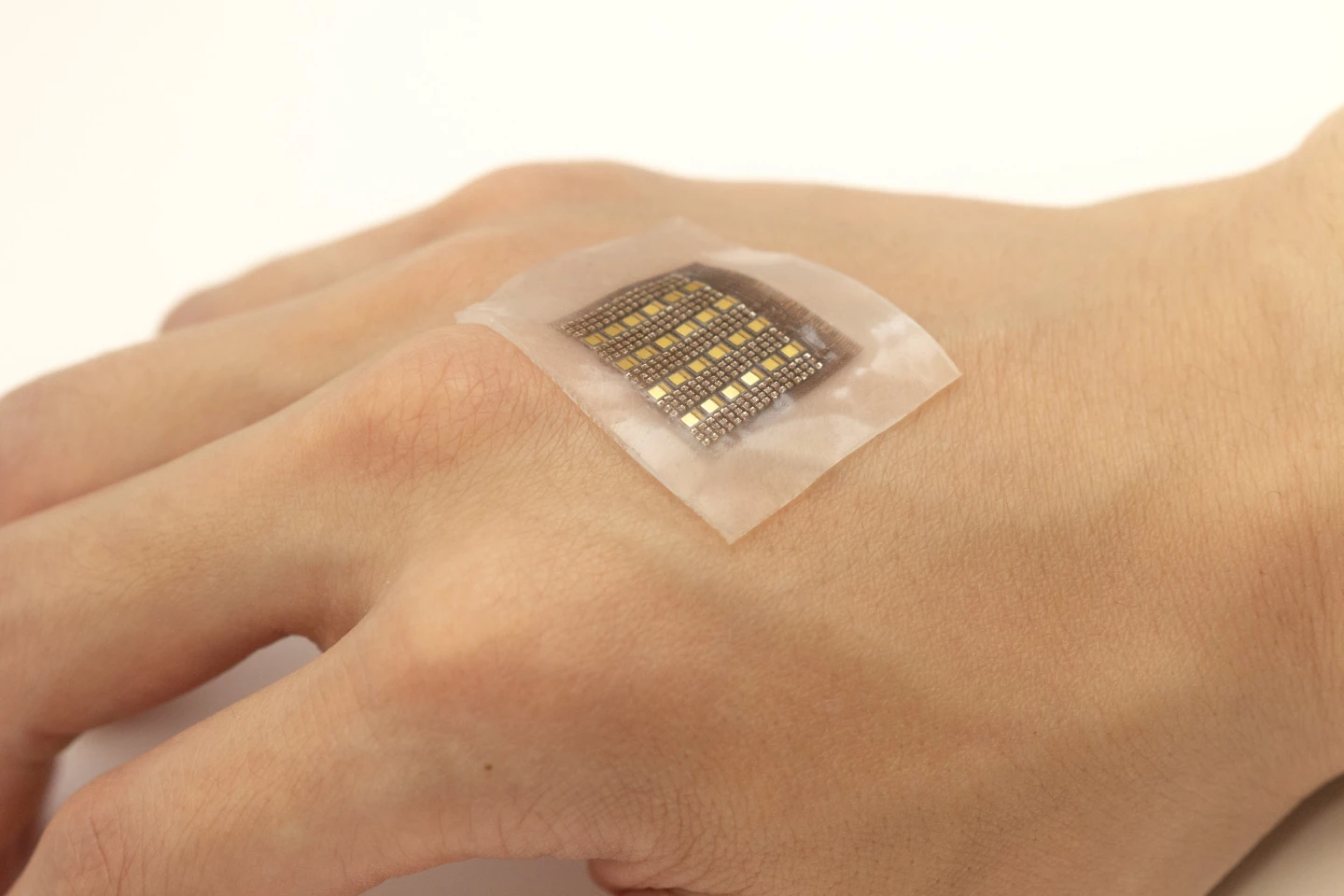Advances in material science and miniaturized electronics have given rise to a promising new breed of wearable patches that could one day measure many metrics of human health, from stress, to glucose levels, to cardiovascular activity. Engineers have leveraged this technology to create an electronic patch capable of monitoring biomolecules in deep tissue, which they say can be used to detect a range of life-threatening conditions including organ dysfunction and malignant cancers.
The novel electronic patch is the handiwork of engineers at the University of California San Diego, and is an extension of research we looked at back in 2018 from the same group. The researchers’ earlier patch used ultrasound waves to continuously monitor the thickness of pulsing blood vessels to offer real-time readings on blood pressure.
The team has now delved further into the realm of cardiovascular monitoring by developing a version to monitor blood perfusion. This bodily function is key to healthy tissue function and the transport of oxygen and nutrients, and when it is hampered it can be indicative of conditions like severe organ dysfunction and heart attacks. Abnormal accumulation of blood, meanwhile, can be indicative of hemorrhaging or malignant tumors.
Monitoring blood perfusion on an ongoing basis can therefore help detect these life-threatening conditions, and the team has sought to achieve this initially through a focus on the biomolecule hemoglobin in deep tissues.
“The amount and location of hemoglobin in the body provide critical information about blood perfusion or accumulation in specific locations,” explained study co-author said Sheng Xu. “Our device shows great potential in close monitoring of high-risk groups, enabling timely interventions at urgent moments.”
While existing technologies like MRI and X-ray computed tomography can detect biomolecules like hemoglobin, they only do so on an immediate rather than ongoing basis, while current wearable solutions can only detect them closer to the skin. The team’s patch is designed to offer a long-term monitoring option for deep-lying biomolecules, with the help of lasers.

The patch itself is flexible and adheres comfortably to the skin. It features arrays of laser diodes and piezoelectric transducers within a soft silicone-polymer matrix, sending pulsed lasers into the tissues below. Biomolecules in the deep tissues absorb this optical energy and cause acoustic waves to radiate through their surroundings.
“Piezoelectric transducers receive the acoustic waves, which are processed in an electrical system to reconstruct the spatial mapping of the wave-emitting biomolecules,” said Xiaoxiang Gao, study author.
In testing, the system proved capable of creating 3D maps of hemoglobin in tissues lying centimeters below the skin, in submillimeter spatial resolution. The team says it can also be tuned to detect a range of biomolecules by altering the wavelengths of the lasers, with monitoring of core temperature also one of the possibilities being explored.
“Continuous monitoring is critical for timely interventions to prevent life-threatening conditions from worsening quickly,” said Xiangjun Chen, study co-author. “Wearable devices based on electrochemistry for biomolecules detection, not limited to hemoglobin, are good candidates for long-term wearable monitoring applications. However, the existing technologies only achieve the ability of skin-surface detection.”
The research was published in the journal Nature Communications.
Source: University of California San Diego
Update December 21: This article has been amended to accurately reflect the limitations of MRI, CT and current wearable tech in detecting biomolecules deep beneath the skin.





